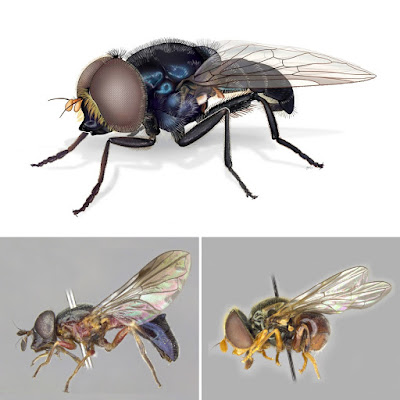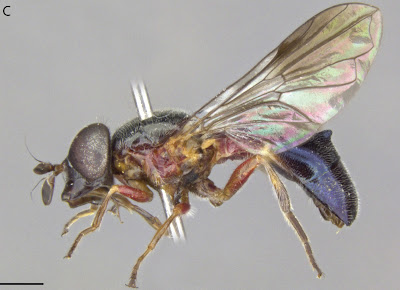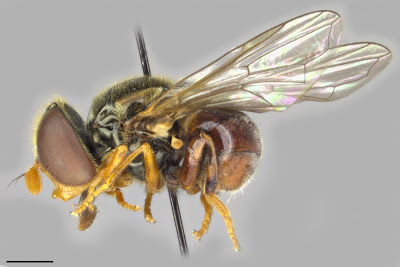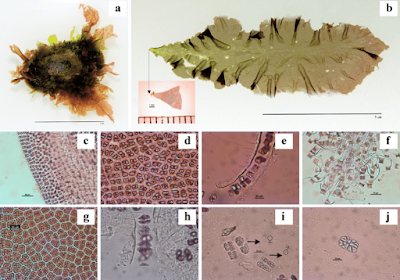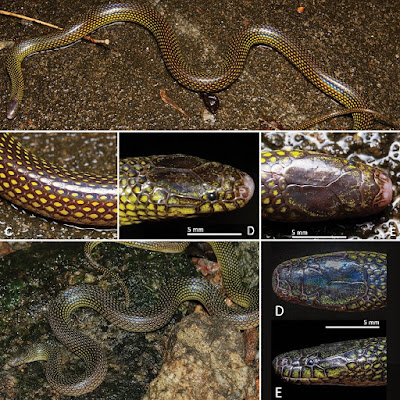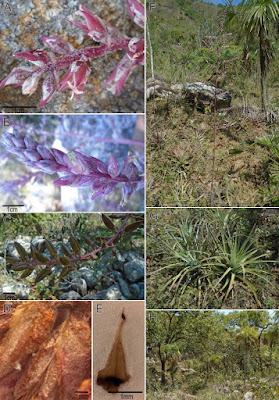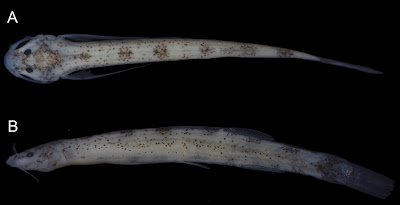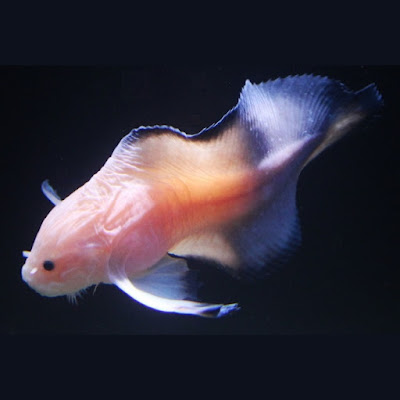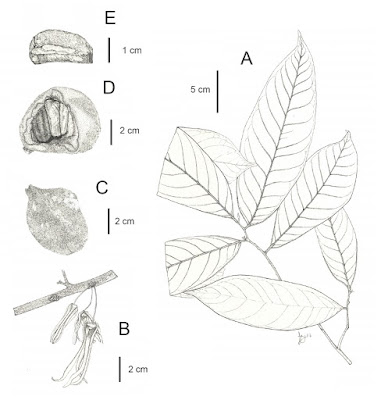[Most Recent Entries] [Calendar View]
Sunday, February 23rd, 2020
| Time | Event | ||||||||
| 6:21a | [Entomology • 2020] Revision of the Psilota Meigen, 1822 Flower Flies (Diptera: Syrphidae) of Australia
Abstract The 34 species of Australian Psilota are revised, with 26 new species described (Psilota aislinnae Young sp. nov., Psilota alexanderi Young sp. nov., Psilota apiformis Thompson and Young sp. nov., Psilota auripila Young and van Steenis sp. nov., Psilota azurea Thompson and Young sp. nov., Psilota bicolor Young and Ferguson sp. nov., Psilota brunnipennis Young sp. nov., Psilota calva Young sp. nov., Psilota darwini Young sp. nov., Psilota flavoorta Young and van Steenis sp. nov., Psilota fuscifrons Young sp. nov., Psilota livida Young and van Steenis sp. nov., Psilota longipila Thompson and Young sp. nov., Psilota mcqueeni Young sp. nov., Psilota metallica Thompson and Young sp. nov., Psilota nigripila Young sp. nov., Psilota occidua Young sp. nov., Psilota pollinosa Young and van Steenis sp. nov., Psilota purpurea Thompson and Young sp. nov., Psilota smaragdina Young sp. nov., Psilota solata Young and van Steenis sp. nov., Psilota spathistyla Young and van Steenis sp. nov., Psilota spinifemur Young sp. nov., Psilota viridescens Young and van Steenis sp. nov., Psilota xanthostoma Young sp. nov., Psilota zophos Young sp. nov.) and one new record for Australia (Psilota basalis Walker, 1858). Previously described Australian species are redescribed, with the males of Psilota auricauda Curran, 1925 and P. basalis (Walker, 1858) described for the first time. Six previously described species (Psilota erythrogaster Curran, 1926, Psilota hirta Klocker, 1924, Psilota queenslandica Klocker, 1924, Psilota rubra Klocker, 1924, Psilota rubriventris Bigot, 1885, and Psilota shannoni Goot, 1964) are morphologically indistinguishable from related species. P. erythrogaster, P. rubra, and P. rubriventris are therefore treated under the Psilota cuprea (Macquart, 1850) species complex while P. hirta, P. queenslandica, and P. shannoni treated under the Psilota tristis Klocker, 1924 species complex. Lectotypes for the following species are designated: Coiloprosopa nitida Macquart, 1850, Merodon muscaeformis Walker, 1852, Orthonevra basalis Walker, 1858, Psilota coerulea Macquart, 1846, and Psilota viridis Macquart, 1847. Keywords: Diptera, Taxonomy, Hover Flies, Hoverflies, Haireye, Oceania, male genitalia, true fly, flower visitor, Eristalinae
Andrew D. Young, Jeffrey H. Skevington and Wouter van Steenis. 2020. Revision of the Psilota Meigen, 1822 Flower Flies (Diptera: Syrphidae) of Australia. Zootaxa. 4737(1); 1-126. DOI: 10.11646/zootaxa.4737.1.1 | ||||||||
| 6:26a | [Phycology • 2020] Pyropia meridionalis • An Appraisal of the Genus Pyropia (Bangiales, Rhodophyta) from southern Africa based on A Multi-gene Phylogeny, Morphology and Ecology, including the Description of A New Species
Highlights: • An appraisal of the genus Pyropia from southern Africa was carried out using an integrative taxonomic approach. • A new, kelp-associated, species was described from the region. • Species boundaries were confirmed for two other species of Pyropia endemic to the region. • Species-level relationships of southern African Pyropia were considered in a global phylogenetic context. Abstract Since its reinstatement, the diversity of the genus Pyropia has never been fully assessed in the Benguela Marine Province in southern Africa (South Africa and Namibia), although it has been included in previous, more general biodiversity assessments. The aim of the present study was to revisit the diversity and identity of species of Pyropia from the region, using an integrative taxonomic approach, including a multigene phylogeny, morphological characterisation and ecological data. The phylogenetic affinities of southern African Pyropia to other species around the world were assessed using three unlinked loci (cox1, rbcL, nSSU rDNA). A species first collected on the South African coast ca. 60 years ago is described as a new species, Pyropia meridionalis, and extended descriptions and further information provided on the distribution and ecology for two previously described species endemic to the Benguela Marine Province: Py. saldanhae and Py. aeodis. Lastly, the identity and occurrence of Py. gardneri, a species widely distributed in North America, could not be confirmed in South Africa, while the cosmopolitan Py. suborbiculata likely occurs in the region but is currently lacking molecular data. The phylogenetic relationships between species from southern Africa and other species occurring in the Southern Hemisphere support the notion of historic connectivity in the Southern Ocean, but also indicate a much more complex historical biogeographical history as some clades are deeply divergent while others are more closely related. Keywords: Bangiales, Integrated taxonomy, Molecular systematics Pyropia meridionalis M.M. Reddy, R.J. Anderson et J.J. Bolton sp. nov. Etymology: This species is named for its distribution along the coastline of southern Africa, (meridionalis in Latin means southern). Maggie M. Reddy, Olivier De Clerck, Frederik Leliaert, Robert J. Anderson and John J.Bolton. 2020. An Appraisal of the Genus Pyropia (Bangiales, Rhodophyta) from southern Africa based on A Multi-gene Phylogeny, Morphology and Ecology, including the Description of Pyropia meridionalis sp. nov. South African Journal of Botany. 131; 18-32. DOI: 10.1016/j.sajb.2019.12.027 | ||||||||
| 6:54a | [Herpetology • 2020] Opisthotropis hungtai • Re-examination of the Chinese Record of Opisthotropis maculosa (Squamata, Natricidae), resulting in the First National Record of O. haihaensis and Description of A New Species
Abstract The taxonomic status of the previous record of Opisthotropis maculosa Stuart & Chuaynkern, 2007 from Guangdong and Guangxi, southern China, is revised based on the comparison of morphological and molecular data collected from the Chinese specimens and the holotype of O. maculosa from Thailand and O. haihaensis Ziegler, Pham, Nguyen, Nguyen, Wang, Wang, Stuart & Le, 2019 from Vietnam. Results reveal that the population from Shiwandashan Nature Reserve in southern Guangxi, China belongs to O. haihaensis, and represents the first national record for China; the populations from western Guangdong and southeastern Guangxi are described as a new species, Opisthotropis hungtai sp. nov. We suggest that O. maculosa should be removed from the Chinese herpetofauna checklist. The new national record of O. haihaensis and the description of the new species bring the total number of Opisthotropis to 13 in China. Keywords: New national record, Opisthotropis hungtai sp. nov., southern China, taxonomy
Opisthotropis hungtai sp. nov. Chresonymy: Opisthotropis maculosa Stuart & Chuaynkern, 2007: Yang et al. (2011) (part); Wang et al. (2017a), Ren et al. (2019). Etymology: The species name “hungtai” refers to Professor Hung-Ta Chang (=Hong-Da Zhang, 张宏达), an outstanding botanist, who established the Tropical and Subtropical Forest Ecosystem Experimental Center in Heishiding Nature Reserve, promoting the development of ecological research in southern China. We suggest the English common name Hung-Ta Chang’s Mountain Keelback and the Chinese name Zhang Shi Hou Leng She (张氏后棱蛇). Diagnosis: Opisthotropis hungtai sp. nov. is characterized by the following combination of characters: (1) TL 464.3–501.2 mm in adult males, 393.2–511 mm in females, (2) tail moderate, TaL/TL 0.20–0.26 in males, 0.19–0.22 in females, (3) internasal not in contact with loreal, prefrontal not touching supraocular, frontal touching preocular, (4) one preocular, one or two postocular(s), (5) temporals 1+1, (6) supralabials seven, the fourth and fifth in contact with eye; (6) maxillary teeth 16–18, (7) anterior pair of chin shields longer than or equal to posterior pair; (8) ventrals 170–189 (+ 2 preventrals) in males, 168–175 (+ 2 preventrals) in females, (9) subcaudals 76–98 in males, 69–84 in females, (9) nasal cleft pointing to the second supralabial, (10) body scale in 15–15–15 rows, (11) body scales smooth, tail scales smooth or indistinctly keeled, (12) chin shields yellow with brownish black mottling, and (13) body and tail dorsum dark, each with a light spot per scale. Distribution and habits: Opisthotropis hungtai sp. nov. is currently known from Heishiding Nature Reserve (ca 300 m a.s.l.) and Dawuling Forestry Station (ca 900 m a.s.l.) in western Guangdong, and Mt. Wuhuang (ca 500 m a.s.l.) in southeastern Guangxi. The specimen from Mt. Wuhuang was collected in a rocky stream. Besides, specimens from Heishiding Nature Reserve were found in pelitic gutterways along the dirt path, and specimens from Dawuling Forestry Station were collected in a pelitic stream. The collection sites were all surrounded by well-preserved, dense deciduous forest. Jian Wang, Zhi-Tong Lyu, Zhao-Chi Zeng, Chao-Yu Lin, Jian-Huan Yang, Truong Quang Nguyen, Minh D. Le, Thomas Ziegler and Ying-Yong Wang. 2020. Re-examination of the Chinese Record of Opisthotropis maculosa (Squamata, Natricidae), resulting in the First National Record of O. haihaensis and Description of A New Species. ZooKeys. 913: 141-159. DOI: 10.3897/zookeys.913.48622 | ||||||||
| 6:54a | [Botany • 2020] Hechtia ibugana (Hechtioideae, Bromeliaceae) • A Novelty in the Genus Hechtia from Jalisco, Mexico
Abstract Hechtia ibugana a new species from the municipality of Puerto Vallarta, Jalisco, is described and illustrated. The new taxon is compared with H. pretiosa and H. rosea, species that also present sepals and petals rose to reddish, as well as with H. iltisii and H. santanae, endemic species of the state of Jalisco, Mexico. Keywords: Hechtia, Puerto Vallarta, Sierra Madre del Sur, Monocots Hechtia ibugana Flores-Argüelles, Espejo & López-Ferr., sp. nov. Diagnose: The new species is similar to Hechtia iltisii but it differs by its silvery lepidote blade at base (vs glabrous), smaller spine distance (3.4–13.4 vs 5–30 mm), inflorescence sterile branches absent (vs present), triangular rose petals (vs ovate green) and green anthers (vs yellow). Etymology: The specific epithet refers to the Herbarium Luz María Villarreal de Puga (IBUG), of the Instituto de Botánica of the Universidad de Guadalajara, where the project Flora of Jalisco is being carried out and the alma mater of the first and fourth authors. Alejandra Flores-Argüelles, Ana Rosa López-Ferrari, Adolfo Espejo-Serna and Ariosto Rafael Romero-Guzmán. 2019. A Novelty in the Genus Hechtia (Hechtioideae, Bromeliaceae) from Jalisco, Mexico. Phytotaxa. 414(2); 105–112. DOI: 10.11646/phytotaxa.414.2.2 | ||||||||
| 7:03a | [Ichthyology • 2020] Ammoglanis obliquus • A New Psammophilic Species of the Catfish Genus Ammoglanis (Siluriformes, Trichomycteridae) from the Amazon River Basin, northern Brazil
Abstract Ammoglanis obliquus sp. nov., a minute catfish species reaching a maximum adult size of 15.5 mm, is described from the Rio Preto da Eva drainage in the central Brazilian Amazon. It is distinguished from all of its congeners in possessing an exclusive combination of character states, including the presence and number of premaxillary and dentary teeth, number of interopercular and opercular odontodes, presence of cranial fontanel, number of dorsal-fin rays, number of anal-fin rays, number of caudal-fin rays, number of pelvic-fin rays, number of pectoral-fin rays, absence of pelvic splint, antorbital morphology, and absence of supraorbital and autopalatine morphology. It is considered to be a member of a clade also including A. pulex and A. amapaensis due to the unique oral, antorbital, and autopalatine morphology. Ammoglanis obliquus is regarded as more closely related to A. pulex than to any other congener, as both species exhibit a similar colour pattern, an absence of the metapterygoid, and the presence of two finger-like projections on the chin region. Key Words: Taxonomy, tropical rain forest, Sarcoglanidinae, systematics
Ammoglanis obliquus sp. nov. Diagnosis: Ammoglanis obliquus differs from all its congeners except A. pulex by the presence of seven diagonal rows of dark cromatophores forming a banded pattern on flank of live specimens (vs trunk with three longitudinal rows of dark chromatophores in A. diaphanus and A. amapaensis, or whitish with few minute dark chromatophores scattered on body in A. multidentatus), the absence of metapterygoid (Fig. 3; vs presence), and by the presence of two finger-like projections on chin region (de Pinna and Winemiller 2000: fig. 2b; vs absence). It is distinguished from A. pulex by the presence of dentary teeth (Fig. 4A; vs absence), the presence of premaxillary teeth (Fig. 4B; vs absence), by having 6+6 caudal-fin rays (vs 5+5), and by the absence of the pelvic splint (vs presence). It further differs from A. diaphanus, A. amapaensis, and A. multidentatus by the absence of the sesamoid supraorbital (Fig. 5, vs presence), by having fewer premaxillary teeth (3 vs 9–12 in A. diaphanus, 8–11 in A. amapaensis, and 10 or 11 in A. multidentatus), fewer dentary teeth (4 vs 8 in A. diaphanus, 7 or 8 in A. amapaensis, and 11–13 in A. multidentatus), and fewer dorsal-fin rays (total of 8 vs 10 in A. diaphanus, 9 in A. amapaensis, and A. multidentatus). It is distinguished from A. diaphanus and A. multidentatus by the presence of 6 pectoral-fin rays (vs 7 in A. diaphanus and 7 or 8 in A. multidentatus), and the presence of a scythe-shaped antorbital (vs antorbital straight, with its tip not curved mesially); from A. amapaensis, by the presence of a wide cranial fontanel (vs dorsal surface of the neurocranium totally ossified, without a fontanel; Mattos et al. 2008: fig. 4), absence of separate ossification of the anterior cartilage of autopalatine (vs presence); from A. multidentatus, by possessing fewer opercular odontodes (8–11 vs 15 or 16), fewer interopercular odontodes (5–8 vs 10 or 11), fewer anal-fin rays (total of 8 vs 9), and fewer pelvic-fin rays (total of 4 or 5 vs 6). Distribution: Known only from its type locality in Rio Preto da Eva drainage, Amazonas river basin, northern Brazil. Etymology: From the Latin obliquus, meaning oblique, referring to the conspicuous diagonal banded colouration pattern of living specimens. Ecological notes: This species is known only from a small clearwater tributary of Preto da Eva river, which is a left margin tributary of the Amazonas river. Individuals were found associated with a sand-bank lying on the centre of an artificial widening of the main course, next to a road. The stream course margins were lined by gallery rainforest, and the water column was about 1 m deep with a weak current. The sand-bank was composed of coarse, yellow sand and with sparse patches of small banks of macrophytes. Capture was accomplished by scooping of the superficial layer of sand with fine hand-nets. Specimens of Potamoglanis Henschel, Mattos, Katz & Costa, 2018 and Ammocryptocharax Weitzman & Kanazawa, 1976 were frequently captured together with Ammoglanis obliquus. This area as a whole is under high deforestation pressure due to local human occupation. Elisabeth Henschel, Pedro H. N. Bragança, Filipe Rangel-Pereira and Wilson J. E. M. Costa. 2020. A New Psammophilic Species of the Ccatfish Genus Ammoglanis (Siluriformes, Trichomycteridae) from the Amazon River Basin, northern Brazil. Zoosystematics and Evolution. 96(1): 67-72. DOI: 10.3897/zse.96.48952 | ||||||||
| 7:04a | [Botany • 2020] Begonia puerensis (Begoniaceae) • A New Tuberous Species from Yunnan, China
Abstract Begonia puerensis sp. nov., a new tuberous species of Begonia sect. Reichenheimia (Begoniaceae) from Yunnan, China is described and illustrated. The morphological similarity between the new species and the similar species B. discreta, B. harmandii and B. qingchengshanensis is compared and discussed and a key to Begonia sect. Reichenheimia in China is provided. The new species is assessed as Endangered (EN) following the IUCN Red List Categories and Criteria. Keywords: Begonia, new taxon, taxonomy, tuberous herb Begonia puerensis W.G. Wang, X.D. Ma & J.Y. Shen, sp. nov. 普洱秋海棠 Etymology: The epithet puerensis refers to the distribution of new species in Puer district, Yunnan province. Wen‐Guang Wang, Xing‐Da Ma, Ren‐Kun Li, Ji‐Pu Shi, Shou‐Zhou Zhang and Jian‐Yong Shen. 2020. Begonia puerensis sp. nov. (Begoniaceae), A New Tuberous Species from Yunnan, China. Nordic Journal of Botany. 38(1) DOI: 10.1111/njb.02618 Newly discovered begonia in need of urgent protection news.cgtn.com/news/2020-02-19/Newly-disc | ||||||||
| 7:07a | [Ichthyology • 2020] Careproctus shigemii • A New Species of Careproctus (Cottoidei: Liparidae) from the Sea of Okhotsk and A Redescription of the Blacktip Snailfish Careproctus zachirus
Abstract A new snailfish, Careproctus shigemii, is described on the basis of three specimens collected in the southern Sea of Okhotsk, off Hokkaido, Japan. The new species has previously been confused with Careproctus zachirus Kido 1985, known from the Aleutian Islands, eastern Bering Sea, the Pacific Ocean off southeastern Kamchatka and the northern Kuril Islands, and the southern Sea of Okhotsk off Hokkaido, Japan, because of their similar appearance, including a noticeably elongate pectoral fin extending beyond the anal-fin origin, the gill slit entirely above the pectoral fin, no opercular flap projection, one suprabranchial pore, and trilobed teeth. However, C. shigemii is clearly differentiated from C. zachirus in having dorsal and anal fins margined with black (vs. white margined dorsal and anal fins with a black submarginal band), and a black caudal fin (vs. pale pink caudal fin), when fresh. Careproctus shigemii differs additionally from C. zachirus in having the cephalic pore pattern 2-6-6-1 (vs. 2-6-7-1), 30–35 pyloric caeca (vs. 20–31), and a shorter pectoral fin lower lobe, 8.2–9.9% SL (vs. longer lobe, 15.9–25.6% SL). A large sequence divergence between C. shigemii and C. zachirus (0.028 in uncorrected p-distance) in the DNA barcoding region (COI) also supports the validity of each species. A redescription of C. zachirus is also provided on the basis of the holotype, paratypes and non-type specimens. Keywords: Careproctus shigemii, COI, Shiretoko Peninsula, Hokkaido, Western North Pacific
Careproctus shigemii sp. nov. (New Japanese name: Otohime-Kon’nyaku-uo) Distribution. Known only from the southern Sea of Okhotsk off Rausu, Hokkaido, Japan. Collection depths ranged from 200 to 300 m. By comparison, C. zachirus in the same area occupies depths of ca. 500–800 m. Etymology. Named after the late Shigemi Fujimoto, a fisherman of Rausu, Hokkaido, Japan, who assisted our team in collecting various marine organisms, including the present new species, and contributed significantly to our efforts to understand the marine biodiversity of Rausu and Shiretoko Peninsula, a World Heritage Area. Koji Matsuzaki, Toshiaki Mori, Moeko Kamiunten, Takashi Yanagimoto and Yoshiaki Kai. 2020. A New Species of Careproctus (Cottoidei: Liparidae) from the Sea of Okhotsk and A Redescription of the Blacktip Snailfish Careproctus zachirus. Ichthyological Research. DOI: 10.1007/s10228-020-00734-w Aquamarine Fukushima Discovered in Shiretoko, Hokkaido!公 表 Announcement of the release of a new species of deep-sea fish “Otohime Konjac” re-how.net/exhibition/418862 | ||||||||
| 7:09a | [Botany • 2020] Stenanona morenoi (Annonaceae) • A New Species endemic to the Limestone Karst Forests of Chiapas, Mexico
Abstract Background and Aims: In Mexico, the Neotropical genera of Annonaceae tribe Miliuseae, including Sapranthus, Stenanona and the Mexican endemic genus Tridimeris, are particularly diverse and many of their species are endemic to this country. This diversity is not fully documented and many new species have been discovered as a result of recent botanical explorations in southern Mexico. Here, we describe a new species of Stenanona. Methods: We collected a new species of Stenanona during field work in a little known karst forest area located in the highlands of Chiapas, Mexico. The new species was recognized using the unique combination of features through comparisons with morphologically similar species and literature review. We assessed its conservation status by calculating its extent of occurrence (EOO) and its area of occupancy (AOO) using the GeoCAT tool and applying the IUCN Red List Categories and criteria. Key results: A new species of Annonaceae, namely Stenanona morenoi, endemic to karstic forests of southern Mexico, is described and illustrated. According to the criteria established by the IUCN, it is possible to tentatively determine the species as Critically Endangered (CR B1ab (iii)). Conclusions: Based on its general floral morphology, S. morenoi is hypothesized to belong to subclade A of the Desmopsis-Stenanona clade. Within this lineage, S. morenoi shares several morphological features with S. migueliana, S. stenopetala and S. zoque. Keywords: cauliflory, Miliuseae, Neotropics, tropical rainforest Stenanona morenoi Ortíz-Rodr. & Moreno-Méndez, sp. nov., Stenanona morenoi is similar to S. migueliana Ortíz-Rodr. & G.E. Schatz, S. stenopetala (Donn. Sm.) G.E. Schatz and S. zoque Ortíz-Rodr. & Gómez-Domínguez, but it can be distinguished from these three species by the combination of 2 or 4-flowered inflorescences, partially fused sepals, cream to light yellow flowers with a red blotch at the base of the inner petals, numerous ovules per carpel and surface of the monocarps completely covered with short, golden-brown, erect hairs, resulting in a velvety texture. Etymology: the specific epithet honors Manuel Moreno Demeza for his extraordinary work in favor of forest conservation in northern Chiapas. Gaspar Moreno-Méndez, Andrés Ernesto Ortiz-Rodriguez. 2020. A New Species of Annonaceae, endemic to the Limestone Karst Forests of Chiapas, Mexico. Acta Botanica Mexicana. 127; e1625. DOI: 10.21829/abm127.2020.1625 |
| << Previous Day |
2020/02/23 [Calendar] |
Next Day >> |
